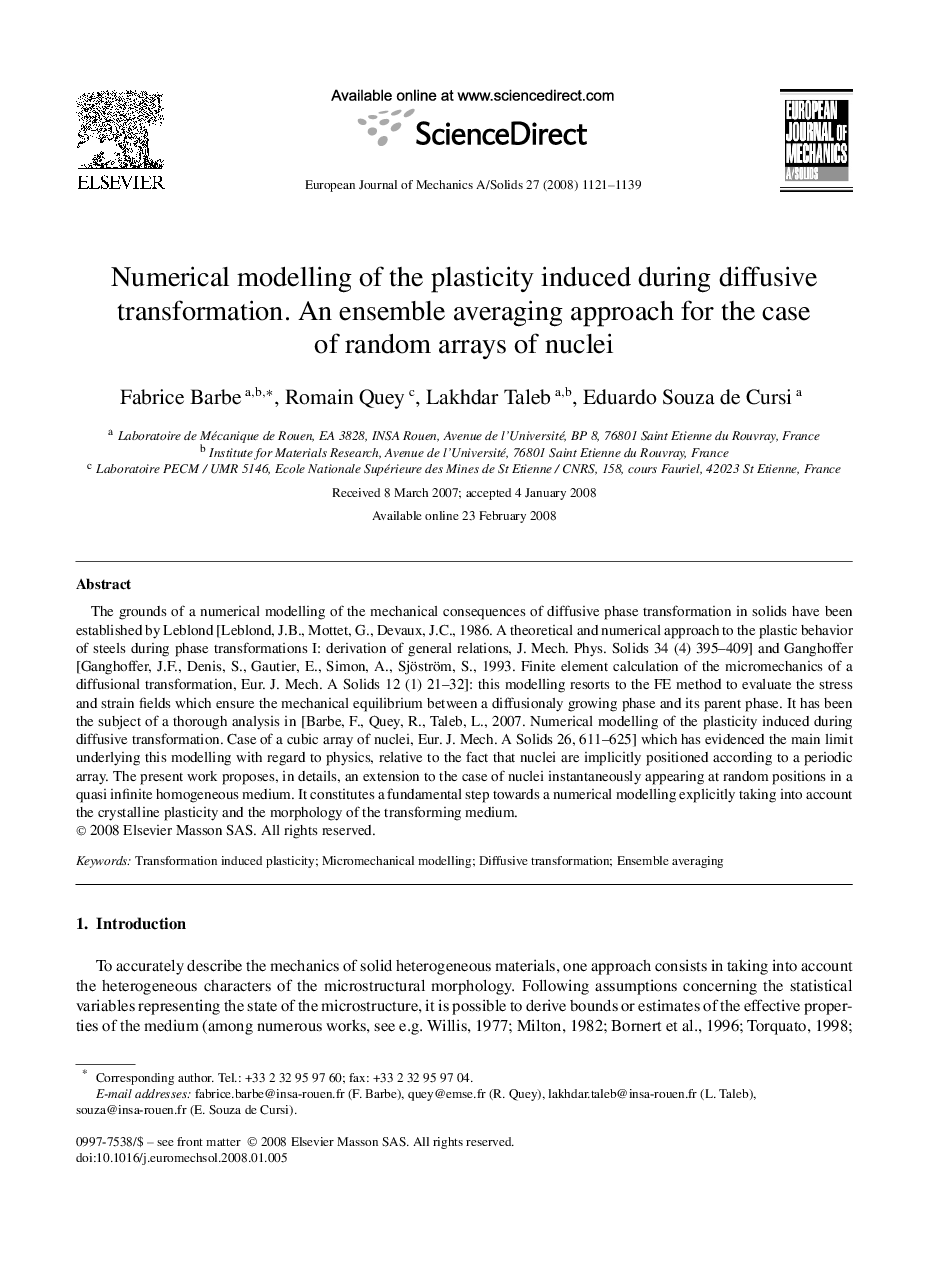| Article ID | Journal | Published Year | Pages | File Type |
|---|---|---|---|---|
| 775235 | European Journal of Mechanics - A/Solids | 2008 | 19 Pages |
The grounds of a numerical modelling of the mechanical consequences of diffusive phase transformation in solids have been established by Leblond [Leblond, J.B., Mottet, G., Devaux, J.C., 1986. A theoretical and numerical approach to the plastic behavior of steels during phase transformations I: derivation of general relations, J. Mech. Phys. Solids 34 (4) 395–409] and Ganghoffer [Ganghoffer, J.F., Denis, S., Gautier, E., Simon, A., Sjöström, S., 1993. Finite element calculation of the micromechanics of a diffusional transformation, Eur. J. Mech. A Solids 12 (1) 21–32]: this modelling resorts to the FE method to evaluate the stress and strain fields which ensure the mechanical equilibrium between a diffusionaly growing phase and its parent phase. It has been the subject of a thorough analysis in [Barbe, F., Quey, R., Taleb, L., 2007. Numerical modelling of the plasticity induced during diffusive transformation. Case of a cubic array of nuclei, Eur. J. Mech. A Solids 26, 611–625] which has evidenced the main limit underlying this modelling with regard to physics, relative to the fact that nuclei are implicitly positioned according to a periodic array. The present work proposes, in details, an extension to the case of nuclei instantaneously appearing at random positions in a quasi infinite homogeneous medium. It constitutes a fundamental step towards a numerical modelling explicitly taking into account the crystalline plasticity and the morphology of the transforming medium.
